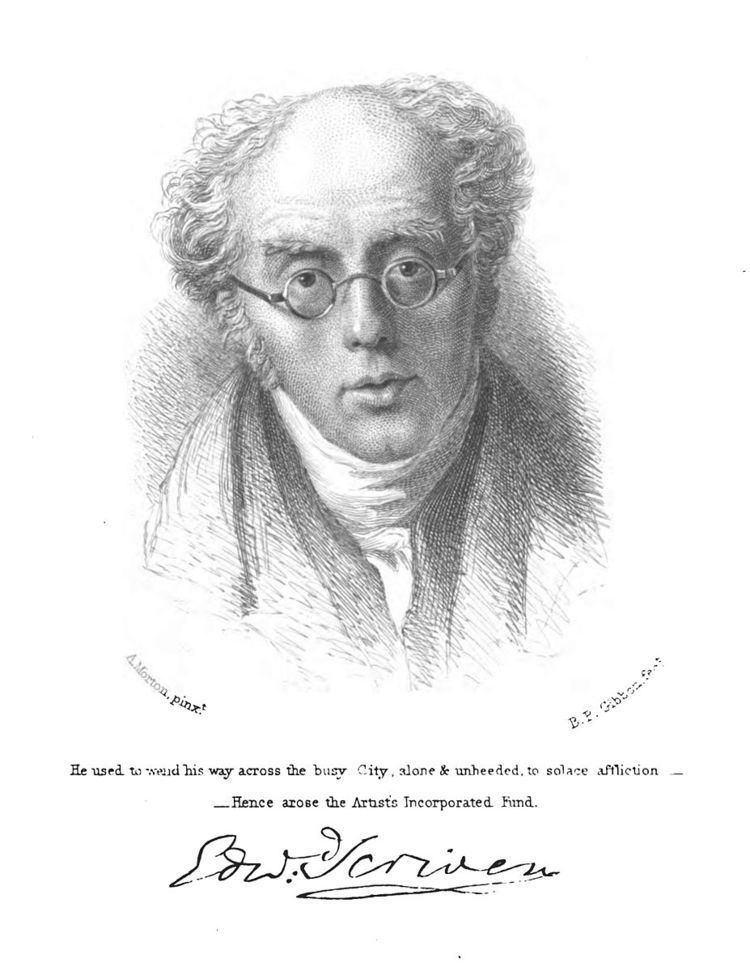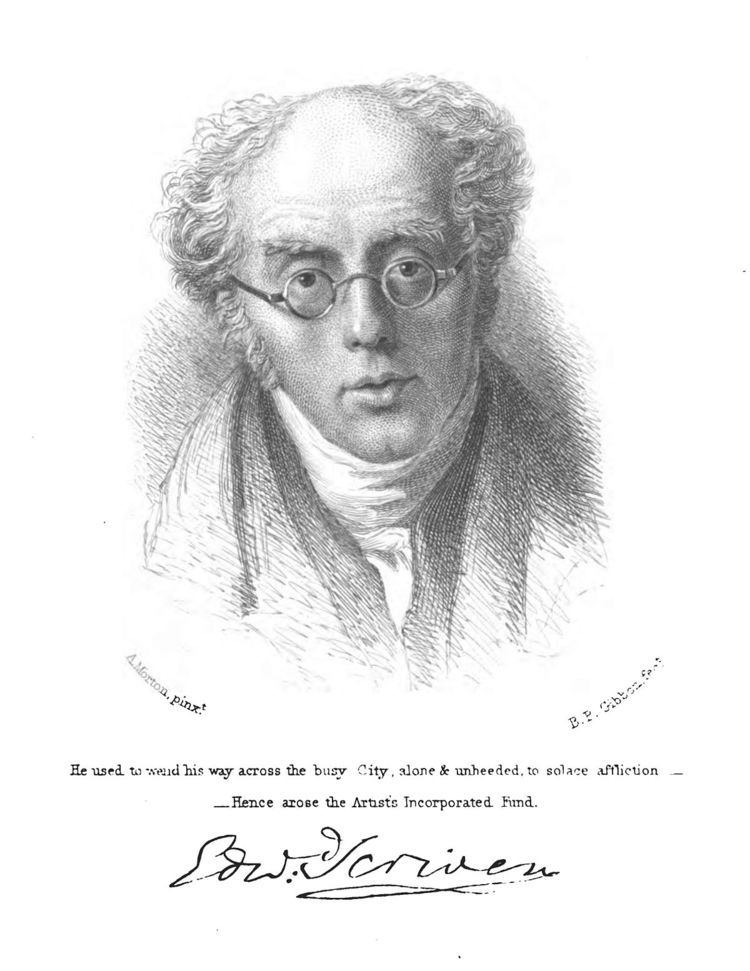Name Edward Scriven | Died 1841 | |
 | ||
Edward scriven
Edward Scriven (Alcester 1775 – 23 August 1841 London) was an English engraver of portraits, in the stipple and chalk manner. Scriven was the pre-eminent engraver of his generation, with 206 portraits ascribed to him by the National Portrait Gallery.
Contents

Life

Scriven was born in 1775 at Alcester, Warwickshire, though his name does not appear in the parish register. He was for eight years a pupil of Northall (Northaw), Hertfordshire engraver Robert Thew. When Thew died in 1802, Scriven replaced him as Historical Engraver to the Prince of Wales. On the Prince of Wales' succession to the throne in 1820 as George IV Scriven was appointed Historical Engraver to the King.
Early in his career he came to London to work on plates for the London publisher, John Boydell. Scriven became the eminent engraver of his generation, producing over 200 portrait engravings.
He was a man of great active benevolence among the members of his profession and a leading proponent and founder of the Artists' Annuity Fund in 1810.
He died on 23 August 1841 at his home at 46 Clarendon Square, Somers Town, London, leaving a widow and five children. He was buried in Kensal Green Cemetery, where a stone was erected to his memory by the members of the Artists' Fund.
Benjamin Phelps Gibbon and Robert William Sievier studied engraving under Scriven.
Works
Scriven worked mainly for the publishers of expensively illustrated books and serials, such as the British Gallery of Portraits, (1809–17); Ancient Marbles in the British Museum (1814) ; Henry Tresham and William Young Ottley's British Gallery, 1818; Edmund Lodge's Portraits of Illustrious Persons, 1821–34; Thomas Frognall Dibdin's Ædes Althorpianæ, 1822; William Jerdan's National Portrait Gallery, 1830–4; and Anna Jameson's Beauties of the Court of Charles II, 1833. His few individual plates included:
He also engraved a set of Benjamin West's studies of heads for his picture of Christ Rejected.
A portrait of Scriven, painted by Andrew Morton, was engraved by Benjamin Phelps Gibbon as an illustration to John Pye's Patronage of British Art.
